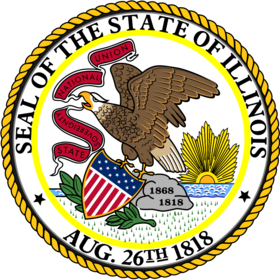Grade 8 - PARCC Examples of Opportunities & Connections
PARCC Examples of Opportunities & Connections
Connections among Standards, Clusters or Domains
Students’ work with proportional relationships, lines, linear equations, and linear functions can be enhanced by working with scatter plots and linear models of association in bivariate measurement data (8.SP.1-3).
Opportunities for In-Depth Focus
| 8.EE.5 | When students work toward meeting this standard, they build on grades 6-7 work with proportions and position themselves for grade 8 work with functions and the equation of a line. |
| 8.EE.7 | This is a culminating standard for solving one-variable linear equations. |
| 8.EE.8 | When students work toward meeting this standard, they build on what they know about two-variable linear equations, and they enlarge the varieties of real-world and mathematical problems they can solve. |
| 8.F.2 | Work toward meeting this standard repositions previous work with tables and graphs in the new context of input/output rules. |
| 8.G.7 | The Pythagorean theorem is useful in practical problems, relates to grade-level work in irrational numbers and plays an important role mathematically in coordinate geometry in high school. |
Connecting Mathematical Content and Mathematical Practices
Mathematical practices should be evident throughout mathematics instruction and connected to all of the content areas highlighted above, as well as all other content areas addressed at this grade level. Mathematical tasks (short, long, scaffolded, and unscaffolded) are an important opportunity to connect content and practices. Some brief examples of how the content of this grade might be connected to the practices follow.
When students convert a fraction such as 1/7 to a decimal, they might notice that they are repeating the same calculations and conclude that the decimal repeats. Similarly, by repeatedly checking whether points are on a line through (1, 2) with slope 3, students might abstract the equation of the line in the form (y - 2)/(x - 1) = 3. In both examples, students look for and express regularity in repeated reasoning (MP.8).
The Pythagorean theorem can provide opportunities for students to construct viable arguments and critique the reasoning of others (e.g., if a student in the class seems to be confusing the theorem with its converse) (MP.3).
Solving an equation such as 3(x - 1/2) = x + 2 requires students to see and make use of structure (MP.7).
Much of the mathematics in grade 8 lends itself to modeling (MP.4). For example, standard 8.F.4 involves modeling linear relationships with functions.
Scientific notation (8.EE.4) presents opportunities for strategically using appropriate tools (MP.5). For example, the computation (1.73 x 10-4) × (1.73 x 10-5) can be done quickly with a calculator by squaring 1.73 and then using properties of exponents to determine the exponent of the product by inspection.
Examples of Linking Supporting Clusters to the Major Work of the Grade
Know that there are numbers that are not rational, and approximate them by rational numbers: Work with the number system in this grade (8.NS.1–2) is intimately related to work with radicals (8.EE.2), and both of these may be connected to the Pythagorean theorem (8.G, second cluster) as well as to volume problems (8.G.9), e.g., in which a cube has known volume but unknown edge lengths.
Use functions to model relationships between quantities: The work in this cluster involves functions for modeling linear relationships and rate of change/initial value, which supports work with proportional relationships and setting up linear equations.
Investigate patterns of association in bivariate data: Looking for patterns in scatterplots and using linear models to describe data are directly connected to the work in the Expressions and Equations clusters. Together, these represent a connection to the Standard for Mathematical Practice, MP.4: Model with mathematics.
